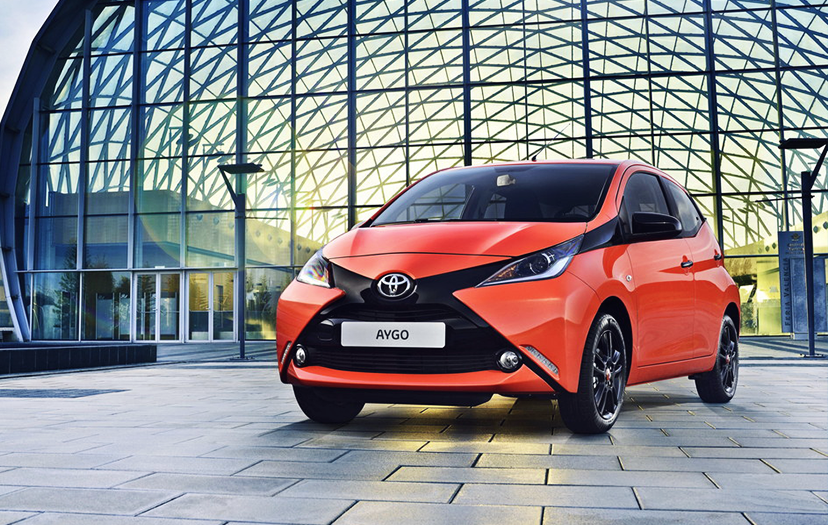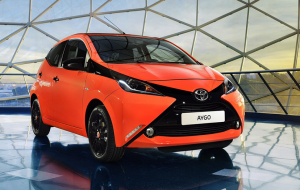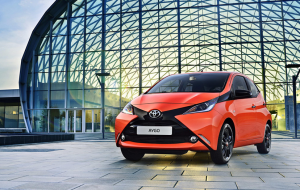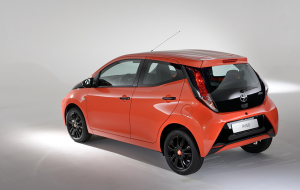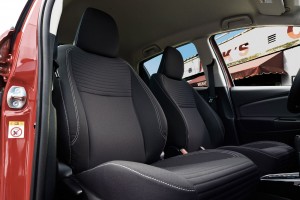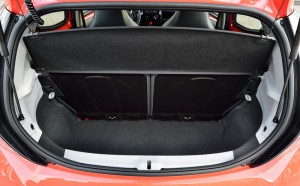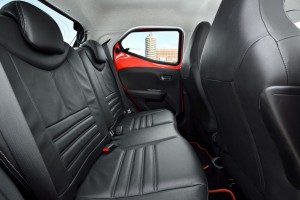In the reveal story of Compact cars that are Low on price and high on value, the Metros magazine team traveled to auto centers in South Africa to draw up a list, that is informative and useful for young entrepreneurs and university graduates.
One of the Cars that I found quite exciting and a bit fun for the package is the all-new Toyota Aygo. It’s traditional to associate a hatch back car with smaller torque but that seems to have changed to a large extent. The Aygo is a distinctive ride that gives quite more than an ordinary hatch back.
A distinctive and characterful design – dubbed “J-Playful” in reference to Japan’s hip youth culture – and a wealth of customisation options show how Toyota has made fun a key element in crafting its new city car. Built in a joint venture with Peugeot and Citroën, the snappily styled, modestly priced model has become a popular fixture of the city car class – particularly in the buoyant secondhand market, where the brand’s reputation for reliability and dealership transparency has probably done it no harm at all.
At the same time new Aygo builds on the qualities that made the original such a success throughout its lifetime, keeping the car compact, nimble and reliable, with genuinely low running costs. The latter are supported by revision to its award-winning three-cylinder 1.0-litre VVT-i petrol engine to secure class-leading fuel economy and CO2 emissions.
Toyota has been bold here. The inspiration for the Aygo’s look is the expansion of a soft centre through a hard shell, hence the dramatic break lines that form the ‘X’ graphic on the nose. But that’s by the by.
The really audacious element of the styling is that a mainstream manufacturer has committed itself to such an obviously divisive feature in the first place. For those who buy into the look-at-me conspicuousness, Toyota has made the front grille, rear bumper insert, front wing section and alloy wheels interchangeable – thereby offering buyers (and dealers) the chance to gently customise the car at any point in its lifetime.
Exterior design
Compact packaging was fundamental to the design of the new Aygo to maintain its town-friendly handling. The overall length has increased by just 25mm to 3,455mm, which means it keeps the class-leading compactness of the previous model, and although front headroom has been increased by 7mm, vehicle height has actually been reduced by 5mm to 1,460mm, supporting the car’s aerodynamic efficiency. Both front and rear tracks have been widened by 8mm.
New Aygo may be compact and characterful in appearance, but it’s robust and has real street presence too. Its solidity comes from a strong form which gives the design its core volume. But, to introduce a playful element, the designers used the concept of a soft object breaking through the hard shell of the design, creating break lines and giving Aygo its distinctive frontal X-graphic. This spreads outwards across the surface of the bodywork, and takes in all the vehicle’s main external features, including upper and lower grilles, headlamps, foglamps, and even mirrors and side glazing.
In profile, the roof has been lowered and the front header moved forwards. As a result, the cabin’s centre of gravity also shifts to the front, creating a more balanced and forward leaning posture. This is further emphasised by a sloping beltline which terminates in the forward leaning rear light clusters. The roof itself has a new pagoda-style profile and an integral rear spoiler. The shape of the side-glazing differs between the three and five-door models, the latter extending its window graphic into the rear light clusters, giving an impression of extra length.
The rear end displays a similar design theme to the front, with the tailgate and lower bumper forming break lines in the vehicle’s solid surface. The lamp clusters are set within the hexagonal tailgate, and the upper bumper section widens into pronounced wheel arches which give the car a broad and stable stance.
Interior design
The shape of the centre console – trapezoidal – sets the theme for new Aygo’s interior and is reflected in details such as the air vents, door trims and gear shift surround. The console supports a wide dashboard with a matt, anti-glare finish, set between slim A-pillars. The new instrumentation features a meter made of up concentric rings which are permanently lit. It incorporates an easy-to-read central multi-information display.
Although the wheelbase is unchanged at 2,340mm, the cabin is longer by 9mm. Wider armrests also improve comfort. There’s more room for luggage as well – an extra 29 litres – and loading is easier thanks to the space between the sill and rear seatback being made 5mm wider.
Multimedia x-touch system
New Aygo will be available with Toyota’s new x-touch multimedia system, operated using a fully integrated seven-inch touchscreen. It’s the first system in its segment to come with a rear view camera as standard. (Please note that equipment for the SA-specced Aygo will be confirmed closer to launch).
Powertrain
New Aygo features a comprehensively revised version of Toyota’s award-winning three-cylinder 1.0-litre engine. The unit has been re-engineered to run with a higher, 11.5:1 compression ratio, and has an improved combustion chamber design for better efficiency. Friction losses have also been reduced, notably by using a new low-friction timing chain. And although it’s still one of the lightest engines on the market, more weight has been saved by introducing a cylinder head with a built-in exhaust manifold.
There’s more power and torque: 51kW at 6,000rpm and 95Nm at 4,300rpm; 85Nm of torque is available from as low as 2,000rpm. The newcomer will be offered with a five-speed manual transmission as standard. Some international markets will also get the optional new x-shift, an automated manual transmission that can be used in fully automatic mode, or with manual gear selection using paddle shifts or the shift lever itself.
In making all these improvements, Toyota has been careful not to sacrifice the engine’s famous sprightly character. It will still rev happily to high speeds and although sound insulation has been improved, its sporty note is still there when pushed hard.
Extensive work has been done to improve aerodynamics, resulting in an improved drag coefficient – down from Cd 0.30 to 0.29.
Together these changes reduce combined cycle fuel consumption from 4,4 litres/100km to just 4.1 litres/100km* and bring CO2 emissions down to 95g/km*, below the 100g/km threshold for annual road tax (VED) exemption.




